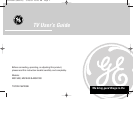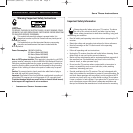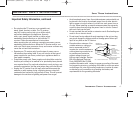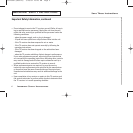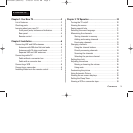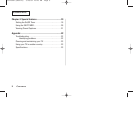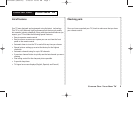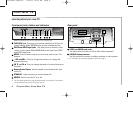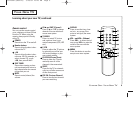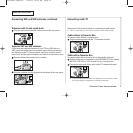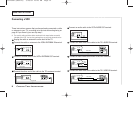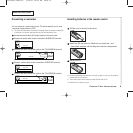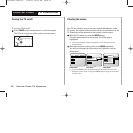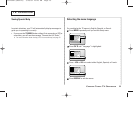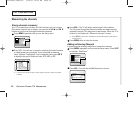
Important Safety Information, continued
• Do not place the TV receiver on an unstable cart,
stand, tripod, bracket, or table. The TV receiver
may fall, causing serious injury to a child or adult,
and serious damage to the appliance. Use only
with a cart, stand, tripod, bracket, or table recom-
mended by the manufacturer or sold with the TV
receiver. Follow the manufacturer’s instructions
when mounting the unit, and use a mounting accessory recom-
mended by the manufacturer. Move the TV receiver and its cart
with care. Quick stops, excessive force, and uneven surfaces may
cause the unit and cart to overturn.
• Operate your TV receiver only from the type of power source
indicated on the marking label. If you are not sure of the type of
power supplied to your home, consult your appliance dealer or
local power company.
• Protect the power cord. Power supply cords should be routed so
that they are unlikely to be walked on or pinched by items placed
on or against them. Pay particular attention to cords at plugs, con-
venience receptacles, and the point where they exit from the unit.
• Unplug the TV receiver from the wall outlet and disconnect the
antenna or cable system during a lightning storm or when left
unattended and unused for long periods of time. This will prevent
damage to the unit due to lightning and power-line surges.
• Avoid overhead power lines. An outside antenna system should not
be placed in the vicinity of overhead power lines or other electric
light or power circuits or where it can fall into such power lines or
circuits. When installing an outside antenna system, be extremely
careful to keep from touching the power lines or circuits. Contact
with such lines can be fatal.
• Do not overload the wall outlet or extension cords. Overloading can
result in fire or electric shock.
• Do not insert foreign objects through openings in the unit, as they
may touch dangerous voltage points or damage parts. Never spill
liquid of any kind on the TV receiver.
• Ground outdoor antennas. If an
outside antenna or cable sys-
tem is connected to the TV
receiver, be sure the antenna or
cable system is grounded so as
to provide some protection
against voltage surges and
built-up static charges. Section
810 of the National Electrical
Code, ANSI/NFPA No.70-1984,
provides information with respect to proper grounding of the mast
and supporting structure, grounding of the lead-in wire to an anten-
na discharge unit, size of grounding conductors, location of anten-
na-discharge unit, connection to grounding electrodes, and
requirements for the grounding electrode.
ii.
I
MPORTANT
S
AFETY
I
NSTRUCTIONS
I
MPORTANT
S
AFETY
I
NSTRUCTIONS
Save These Instructions
ANTENNA
LEAD IN WIRE
ANTENNA
DISCHARGE UNIT
(NEC SECTION 810-20)
GROUNDING
CONDUCTORS
(NEC SECTION 810-21)
GROUND CLAMPS
POWER SERVICE GROUNDING
ELECTRODE SYSTEM
(NEC ART 250, PART H)
GROUND CLAMP
ELECTRIC
SERVICE
EQUIPMENT
NEC — NATIONAL ELECTRICAL CODE
EXAMPLE OF
ANTENNA GROUNDING
1547290B (MG20-E) 3/29/01 10:25 AM Page 3



